Koji: The Japanese Ingredient Chefs Use To Amp Up Their Desserts
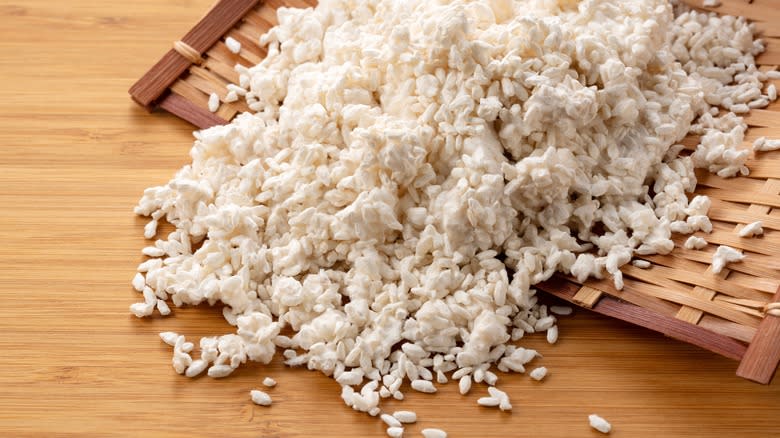
Koji is a transformative, mesmerizing ingredient. Its name may not ring any bell, but it is commonly used to create miso, shoyu (Japanese soy sauce), sake, and makgeolli. Also known as a strain of Aspergillus oryzae, koji is a fungus whose imperatively umami flavor kickstarts fermentation. From what history tells us, the mold has served in the process of fermentation for thousands of years, and its application in traditional Japanese cooking is celebrated globally.
You may wonder what the connection between koji and desserts is, especially because it primarily appears in savory contexts. But that's the beauty of koji; its savory-sweet taste can unravel other sweet notes within a dessert. Intertwined in pastry, koji has the power to complement berries and stone fruit while staying true to its tangy essence in sorbet and ice cream.
If you're intrigued by the prospect of using koji in desserts, this is the ideal starting point.
Read more: 14 Facts You Should Know About Japanese Cuisine
What Is Koji?

It's believed that the use of koji to ferment foods was born in China some 2000-3000 years ago before it was brought to Japan in the Yayoi period (300 B.C. to 300 A.D.). Although mentioning fermentation may conjure images of yeast, koji is not considered a yeast product.
Koji has two meanings. It can refer to the mold, aka the fungus itself. It can also refer to any grain (or ingredient) that has undergone inoculation with the fungus. The former, Aspergillus oryzae, is a Filamentous fungus, which means it can produce a vast amount of various enzymes to digest its food. These enzymes include protease, amylase, saccharose, and lipase. Each works to break down a particular element of the fungus' food, turning proteins into amino acids, starches into sugars, and fats into aromatic compounds. The koji mold has various colors, from white, yellow, black, and red.
Once used to inoculate an ingredient, the koji spores resemble a fluffy dusty layer, like snow. What the koji has been inoculated with will impact the final product.
The Koji Process
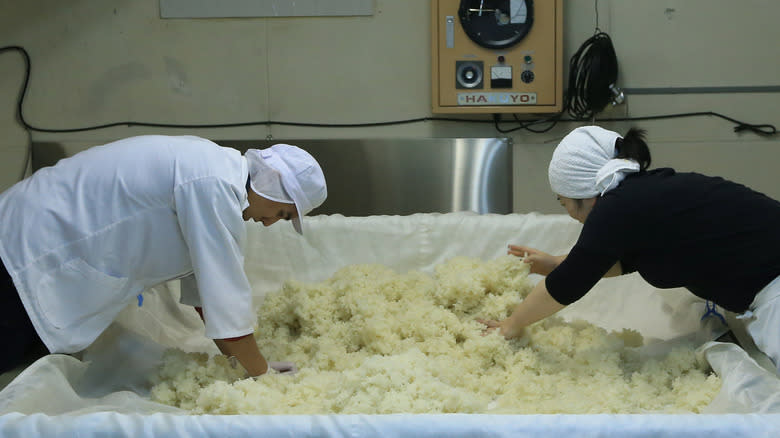
While koji may appear as a functional sidekick ingredient meant to enhance the flavors of its counterpart, demonstrating its purpose is a testament to why it deserves recognition in its own right. Although the koji fermentation process may differ depending on the grain used, rice is a good example of how the process is undertaken. Rice is soaked and steamed to achieve the desired moisture level before being brought into a koji muro (koji room). The koji muro is a temperature-controlled room that has suitable humidity levels to grow the koji within. The koji must be insulated from outside air.
The rice is then mixed until it has reached body temperature. When the optimum conditions have been met, the koji mold is inoculated with the rice. The koji is monitored over the next 40-50 hours to ensure it grows in the best possible way. Once this is achieved, the koji rice is cooled and ready to be used.
Growing mold might seem straightforward; just let food start to rot, right? However, koji fermentation is a delicate process that demands attention and detail to attain that complex flavor.
The Essence Of Umami
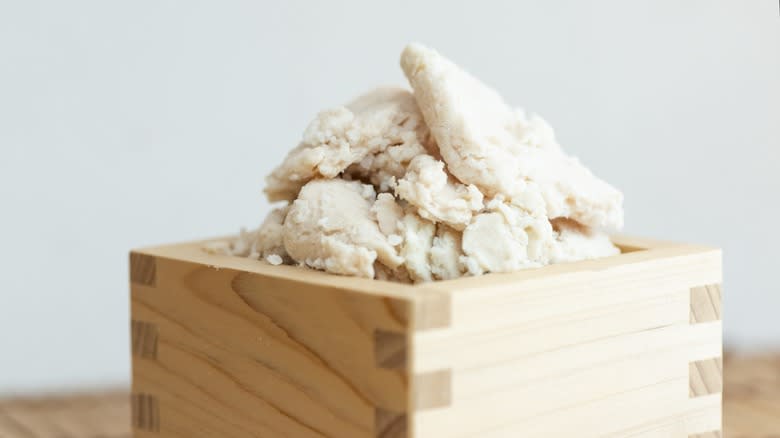
Have you ever wondered how plain soybeans or rice can take on the incredibly deep taste of soy sauce or the complex miso flavor? Well, the answer is koji. Fermentation would not occur without it, and a puddle of beans or wet rice would be left. It's in this process that the flavor of umami is born. Identified in Japan more than a century ago, umami is the fifth flavor category, alongside salty, sweet, sour, and bitter. Umami is separate from salt and savory; its core is meaty deliciousness.
So, how does this work when it comes to desserts? Sweet-umami combinations are gaining popularity in the culinary world, and they tie savory and sweet flavors together in new and exciting ways. This may come in the form of fruit soaked in soy sauce, miso peanut butter, or sake and watermelon sorbet. These instances showcase the flavor koji has imparted onto barley, rice, and soybeans, but it's worth highlighting koji's unique flavor. Upon smelling koji, one detects sweet aromas mixed with yeasty undertones and a slightly nutty and citrus finish. Some chefs have commented on its cheesy flavor, while others use it for its cultured tang.
Like the aforementioned pairings of sweet with savory, koji is also commonly paired with sweet or tart fruits, including those that are pickled. The koji balances sour and sweet notes with an umami undercurrent.
Rice Koji Vs. Soybean Koji Vs. Barley Koji
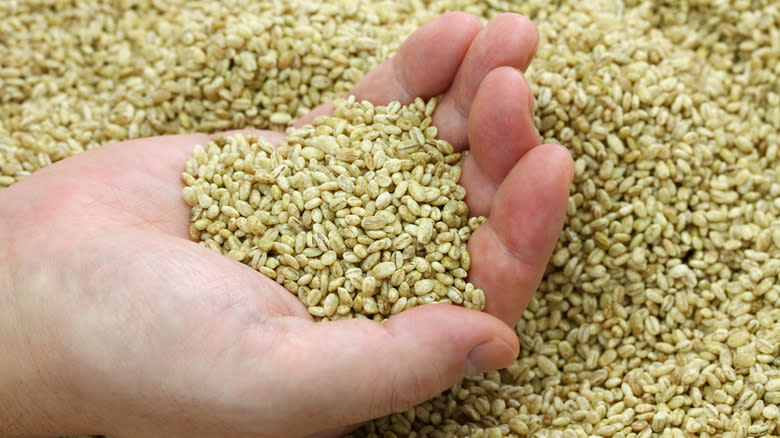
Before getting stuck into dessert pointers, clarifying the differences between rice koji, soybean koji, and barley koji is important. (These are the three main types of koji ingredients, which is different from the types of koji mold.)
Rice koji is the most popular variation, due to its vast applications, including miso, sake, shoyu, and amazake. The flavor of rice koji differs depending on the region it's grown in, the climate it's experienced, and the type of rice it's been made from. For instance, jasmine and basmati rice are more fragrant — and perfect for desserts.
Soybean koji has an intense and rich umami flavor. It's typically used to make soybean miso, which is used to season miso soups, hot pots, and yakitori dishes. A common misconception is that miso paste is always produced from fermented soybeans, but barley koji can also create miso. Barley koji is sweet and light; it also appears in the production of shochu, a Japanese liquor. However, challenges have been associated with growing koji on barley due to a thick layer on the barley that prevents the spores from growing.
The Koji Realm Of Desserts
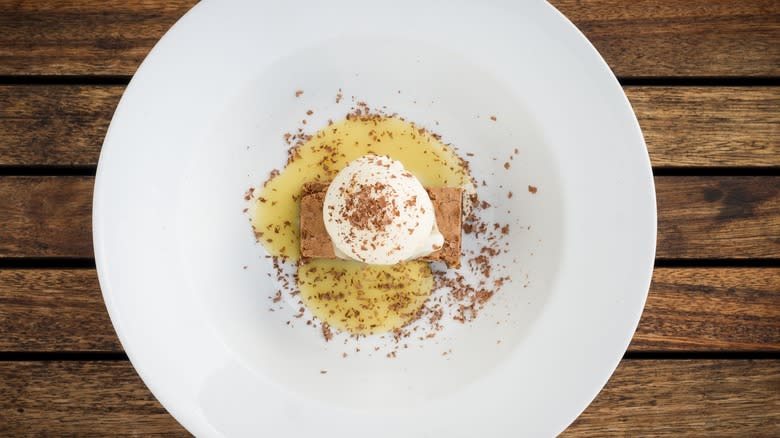
There are a multitude of ways you can use koji in desserts, from ice cream to cupcakes, butter to caramel. Firstly, you want to consider what ingredients you pair the koji with. Berries and stone fruit are beautiful additions to the tanginess of the koji, particularly if it's infused into ice cream.
If you're new to using koji, a koji ice cream is simple to prepare. Purée jasmine rice koji (fresh or frozen), granulated sugar, and water until smooth. Season with salt, and ensure it's cool before placing it into an ice cream maker. Freeze completely before serving. Jasmine rice koji ice cream will capture those floral notes from the rice while bringing a slightly tangy umami edge. You can even roast barley koji, which will release a chocolatey aroma infusing well with those savory undertones. This is then superbly infused into ice creams (vanilla would pair well), but keep an eye on the roasting process. Over-roasting can lead to a taste similar to that of bitter coffee.
If you want a koji ingredient you can use in multiple ways, koji butter is an excellent choice. You can experiment with different koji ingredients, such as rice or barley, and infuse heavy cream with a tablespoon of the koji for 24 hours. After this, you can remove the koji and make the butter from the infused cream. This butter can be used in baking or smothered on a slice of banana bread.
Where To Source Koji
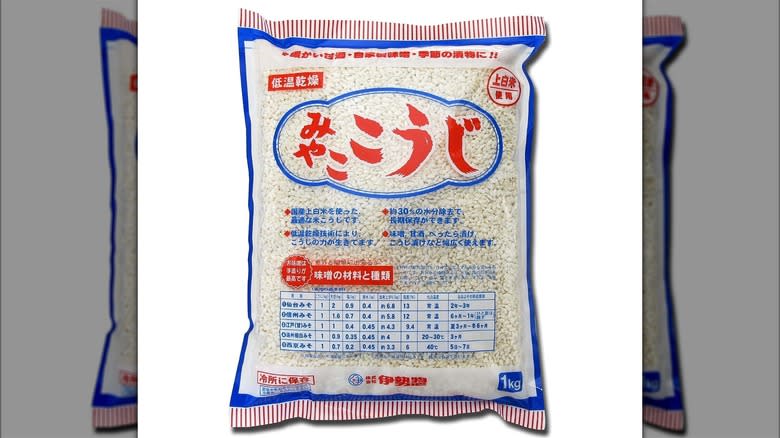
When it comes to souring koji, you need to decide whether you'll ferment the koji yourself or buy an ingredient already fermented with koji. Koji starters or koji seeds are the spores that will initialize the fermentation. Koji starters can be found online at Amazon; otherwise, if you're in a city with an Asian or Japanese store, they may sell the starter. In stores, it will most likely be kept in a refrigerator to keep it fresh. Remember, it's a fungus; you want it moist, not dry.
If you're fermenting with koji for the first time, it's essential to be as informed about the process as possible. "Koji Alchemy," "The Noma's Guide to Fermentation," and "The Art of Fermentation" are all great books to help get you started.
If fermenting koji is out of your comfort zone, rice koji is easily found on Amazon. Brown rice koji can also be found. But for other variations, such as jasmine koji, you'll have to make it yourself. The same also applies to barley and soybean koji. If you're serious about crafting a dessert that sings with the flavors you want from the koji, initiate the koji fermentation yourself.
Other Koji Variations
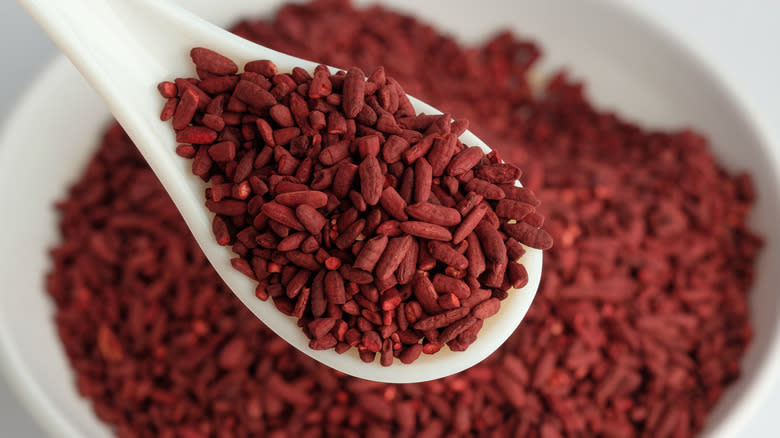
If you want to dive into the absolute depths of koji, it's helpful to know how different mold strains may differ in flavor. Yellow koji, commonly called Aspergillus oryzae, does not contain citric acid, so it holds a lighter flavor. On the other hand, red koji, or Monascus genus, is usually used to produce Chinese red wine or Shaoxing wine. Its bright red spores are evident in these uses.
Black koji, or Aspergillus Awamori, contains citric acid, so its flavor is much more potent. Consequently, it's primarily used to make a single-fermentation spirit, awamori, in the Okinawa islands of Japan. White koji, or Aspergillus Kawachi, is a variant of black koji, but it's usually less acidic. It's typically used in the fermentation of Shochu.
If you're met with various koji strains, remember that yellow koji mold is the most versatile. Its lighter flavor will also likely be simpler to manage in dessert recipes instead of a powerful koji used for brewing. Now that you're equipped with the knowledge to understand koji, it's time to amp up your desserts. You'll be captivated by what this transformative ingredient can achieve.
Read the original article on Daily Meal.

